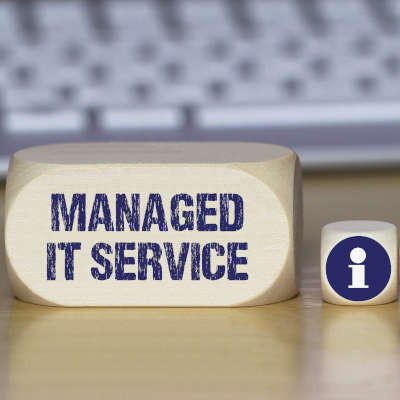NetWorthy Systems Blog
We throw the term “best practice” around a lot… enough that, without an appreciation for what the term actually means, it can start to sound like just another buzzword that the IT guy is using to sound more impressive. We assure you that this is not the case, and that the term “best practice” actually does mean something.
With businesses relying so much on technology to accomplish just about everything, IT undoubtedly has an important role to play. It makes sense that you would want your business’ IT to deliver as much value as possible. To accomplish this, we wanted to go over three IT-centric processes that are primed to help you do so.
Whether you refer to them as clients or customers, the people who act as patrons to your business are essential to its success and survival. This means that you need to keep them as happy as possible. While there are many aspects of maintaining a high level of customer service, we wanted to take a bit of time to examine how deploying the right technology can assist your business in doing just that.
For many businesses, despite the incredible benefits that technology can provide, it is often a source of great stress. This is especially true for the small business owner, who often has much more restrictive parameters to work with, such as a limited budget, workforce, and even the workspace or office. How can organizations like yours stay competitive against companies that have so many more resources available to them? One answer, in terms of technology management, is managed services.
With so much confusion, crisis, and conflict happening over the past year, businesses of all sizes have turned to technology as a necessary means of remaining open. As a result, the perspective many these businesses have of their IT has shifted considerably. Let’s explore some of the revelations that organizations have had, and how they’ll impact operations from this point on.
Your organization needs its technology to fuel its day-to-day operations. That means they need to be maintained. Organizations that don’t have an IT department will often look to use different strategies to ensure their IT is up and running. Without the proper expertise, however, keeping this technology maintained can be a major problem.
Technology has made its way into nearly every business, especially in 2020 with all that has been going on. There really is no choice, but with the commitment to technology there comes risk. If technology fails, your business takes a step back. Today, we will discuss how managed IT services work to manage your risk and keep your IT running effectively.
Managed services - what are they? The short answer, other people managing the IT systems that you rely on every day to be productive and accomplish your tasks. In essence, they are a freedom from dealing with the troublesome and time-consuming parts of leveraging technology. You may have heard this much about managed services before, but have never been given a deeper understanding of what they entail. That is precisely what we aim to accomplish below.
Most modern businesses depend on technology in at least some capacity, whether it’s for productivity, efficiency, or even security purposes. Without access to important data and applications, your business is a shell of its former glory. This is why it’s so important for businesses like yours to implement managed IT services. It certainly beats having untrained employees maintain your crucial computing systems!
Selecting a managed service provider should be like selecting any employee. You need to make sure that your expectations are going to be fulfilled, and that your selection will be there when you need them to be. However, the criteria you examine your potential IT service provider by should be a little different than how you evaluate your other prospective team members.
How does your organization manage its mission-critical technology solutions? We know that most small businesses have some sort of trouble with this topic, either due to budget constraints or a lack of personnel. Either way, we know that there is a better way to manage your business’ technology, and it’s all thanks to an approach called managed IT services.
Who would you rather hire--an employee who comes in late, after your systems have encountered an issue, and takes twice as long to fix them as he said, or an employee who was ahead of the game, and managed to avoid issues before they influenced your business? This scenario is precisely the same one that you encounter when you weigh a break/fix IT provider against a managed service provider.
How much time does your business waste on managing its own technology services? This includes maintaining your email solution, upgrading and managing your desktop infrastructure, and keeping your network secure from both internal and external threats. We would understand if you said that you don’t have time to both run your business and its technology, but we are of the firm belief that you shouldn’t have to choose one over the other.
In the natural course of doing business, an owner/operator will have to face many difficult situations, but none of these situations are as difficult as asking them to determine whether or not to close the doors of the business for good. Many problems could cause a business to fail, but it has to hurt the failing owner a little more when the solution for the problem was not only within his/her reach, it was affordable.




















